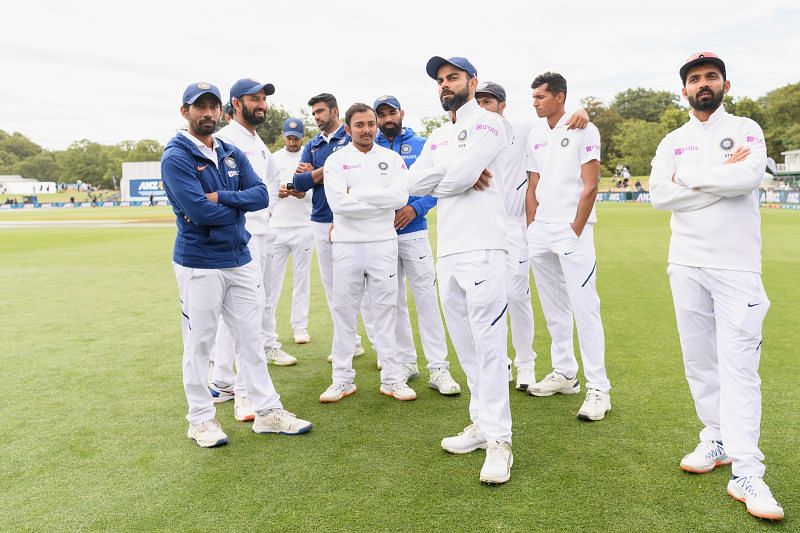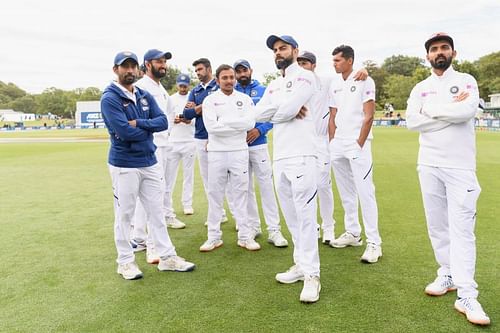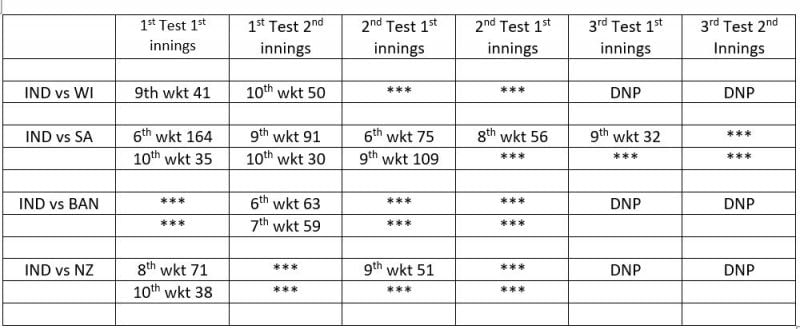
The Tail - India's Biggest Weakness in Test Cricket
Tail-Tale - Exposing India's Biggest Weakness

Over the last twelve months, India has played some high-class Test cricket and has been relentless in its quest for world domination. India has won four out of its previous five-Test series in the ICC World Test Championship and tops the points table. However, most recently, their humbling defeat at the hands of an equally disciplined and fierce opponent - New Zealand, has given rise to many debates.
- Should Virat Kohli give up captaincy in at least one of the formats, so he is more relaxed when he bats?
- Did India fail to assess the Kiwi conditions?
- Did they select the best eleven?
- How badly is India missing a quality left-arm pacer? Should Test series between the top nations in the world be longer (four to five-match)?
New Zealand made optimum use of its home turf, and India felt the absence of key pieces in its squad - Rohit Sharma, Shikhar Dhawan, KL Rahul, Hardik Pandya, and Bhuvneshwar Kumar. Apart from this, what is it that India still needs to win emphatically even in an away series?
A wise man once said: "victory and defeat are determined by attention to simple things." There is one department in which India can still drastically improve - wrapping up the lower order.
Also see – IPL 2020 Players
In its last five-Test series, in 9 matches and 18 innings, India has allowed ten 50+ run partnerships to the second half of their opposition's batsmen, including nine 30+ run 9th or 10th wicket partnerships.
India's massive victories against the Caribbean and Bangladesh overshadowed this glaring flaw. In the 1st Test versus the West Indies, the hosts had their visitors struggling at 179-8 in the first innings. WI went on to score 222 thanks to a 9th wicket partnership between James Holder and Miguel Cummins worth 41 runs. In the second innings of the same match, WI found itself at 50-9, but India struggled to pick up the final wicket before eventually bowling its opponent out for 100.
In the 1st Test of a three-match series against the Proteas, after putting up 501 on the board in the first innings, India had South Africa at 178-5. The visitors went on to score a total of 431, thanks to a 164-run sixth-wicket partnership between Dean Elgar and Quinton de Kock and a 35-run tenth-wicket partnership between Kagiso Rabada and Senuran Muthusamy.
A similar feat occurred in the second innings. Chasing a target of 394, SA was struggling at 70-8, but (Senuran Muthusamy and Dane Leeorey Piedt got together for a 91-run 9th wicket partnership, and a cameo tenth-wicket partnership of 30 runs between Kagiso Rabada and Senuran Muthusamy helped SA reach a respectable total of 181-10.
In the second Test match, India bowled SA's first-half order for only 53 runs in the 1st innings. However, a sixth-wicket partnership between Francois du Plessis and Quinton de Kock worth 75 runs and a ninth-wicket partnership of 109 between Keshav Maharaj and Vernon Philander helped SA amass a total of 275.
Again, in the second innings, SA lost their first five wickets for 79 runs. A sixth-wicket partnership of 46 runs and an eight-wicket partnership of 56 helped SA to a total of 189.
Despite everything, India won by an innings and 137 runs.
India conceded another 32-run 9th-wicket partnership to SA in the first innings of the third and final Test but won the match handsomely by an innings and 202 runs.
India seemed much more disciplined in the third and final Test match, taking wickets at regular intervals and bowling their opponent out for 162 in the first innings. However, after having SA humiliated at 36-5 in the second innings, India gave up 97 runs to the bottom half allowing a series of 25 + runs partnerships.
A disciplined Indian attack bowled Bangladesh out for 150 in the first innings of the 1st Test match. In the second, India's struggle with the tail continued. Bangladesh was five down for 72 but went on to put up 213 thanks to a 63-run sixth-wicket and 59-run seventh-wicket partnerships.
In the final Test match, Bangladesh found itself at 38-5 after electing to bat first. Its second half fought valiantly to put up a total of 106 on the board. Bangladesh only fared a little better in its second innings. After losing its fifth wicket at 133, it died a slow and torturous death at 195 to lose the match by an innings and 46 runs and the series.
After collapsing for a mere 165 in their first innings in the 1st Test versus New Zealand in New Zealand, India fought back to have NZ at 225-7. However, India gave up 71 runs for the eight-wicket partnership and 52 for the last two wickets. A 38 run tenth-wicket partnership solidified NZ's total to 348. This resulted in India suffering its first ICC World Test Championship loss.
In the second and final Test match, India had NZ five down for 133 and eight down for 177. However, the last two partnerships added 58 to NZ's total of 235. A ninth-wicket partnership between Neil Wagner and Kyle Jamieson was worth 51 runs. NZ went on to beat India by seven wickets to seal the series sensationally.

This analysis shows how India has been struggling to nip the tail in the bud and where it still needs improvement. Although India has been gritty and determined, there is scope for vast improvement. "The endgame [still] belongs to the truly diligent, not the merely talented". If India can tighten this department, it can become an even more intimidating opponent for the remainder of the ICC World Test Championship.